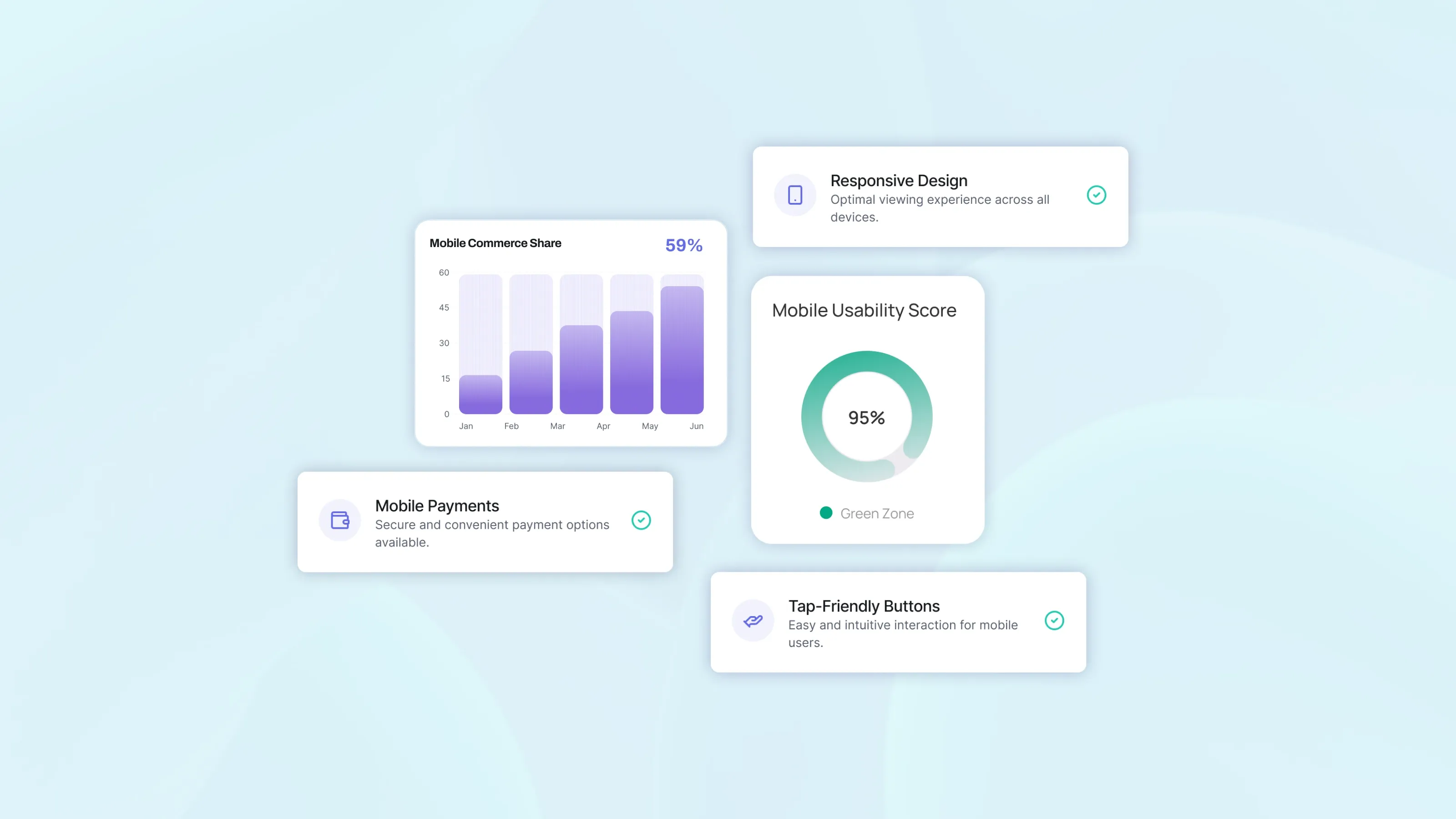Overview
Optimizing your ecommerce website for conversions means focusing on both user experience and visibility. While ecommerce seo optimization helps bring the right traffic to your store, conversion-focused design ensures those visitors complete their purchases. From faster page speed and simplified navigation to persuasive product pages and trust-building elements, every small improvement can lift your conversion rate above the average 2.5%–3%. This guide breaks down seven proven steps to help you streamline the buying journey and turn more clicks into loyal customers.
1. Simplify Site Navigation
Confusing navigation is one of the main reasons shoppers leave without buying. A clear site structure improves the customer journey and supports seo mobile optimization by making your store easier to browse on smaller screens.
- Focus menus on top categories, not dozens of links.
- Add breadcrumbs so users always know where they are.
- Use descriptive anchor text (e.g., Running Shoes vs. Click Here).
- Organize categories, subcategories, and filters logically to avoid overcategorization.
According to Baymard’s Mobile UX Trends 2025 report, many mobile e-commerce sites perform poorly in homepage & category navigation, especially in the way they implement taxonomy and navigation for mobile users.
2. Speed Up Your Website
Site speed matters in 2025 more than ever - it affects both user experience and SEO rankings. Snoika’s “10 SEO Best Practices for 2025: How to Rank Higher on Google” confirms that page load speed, mobile usability, and responsiveness are essential ranking signals.
Recent stats:
What to do:
- Compress images and use next-gen formats like WebP or AVIF.
- Enable efficient caching and use a CDN.
- Remove or defer non-critical JavaScript and unnecessary plugins.
Faster loading improves mobile usability, keeps users engaged, and reduces bounce rates - all of which help with credibility, conversions, and SEO under Google’s page experience signals.
3. Optimize for Mobile Shoppers
Mobile commerce is expected to represent around 59% of all retail ecommerce sales in 2025. At the same time, Google uses mobile-first indexing, meaning seo mobile optimization - including responsive design, mobile usability, and fast load times - is now an essential ranking signal.
 What to do:
What to do:
- Use responsive design so pages work well across all devices.
- Make buttons and links tap-friendly.
- Simplify checkout forms and support mobile payment options.
Good mobile UX reduces bounce rates, keeps users engaged, improves conversions, and aligns with Google’s mobile usability signals.
4. Create Conversion-Focused Product Pages
Product pages are the moment when customers decide to buy. To increase conversions, prioritize visuals, messaging, and trust.
- Display genuine customer reviews and star ratings - sites that prominently show reviews tend to convert better.
- Use high-quality images and video demos that clearly show features and usage.
- Write benefit-driven descriptions: explain what the product solves or improves in the buyer’s life.
Ensure the “Add to Cart” or equivalent CTA button is clearly visible and easy to click or tap.
Snoika’s “How to Choose the Best Marketing Agency for Your Brand in 7 Streamlined Steps” also underlines clarity, trust signals (like reviews), and strong visual content as key factors for persuasion.
5. Use High-Quality Visuals and Video
Visual content is more than decoration - it’s a conversion driver. In 2025, marketers report that adding video to product pages greatly increases user engagement and leads to better performance in search results.
Recommended Actions:
- Show product demos or short tutorial videos to explain features.
- Use multiple images, including lifestyle shots that reflect real-use cases.
- Optimize visuals (compression, lazy loading, next-gen formats) to ensure fast loading.
Studies show that pages with video can see up to 157% more organic traffic than those without.
6. Build Trust with Social Proof
Trust is a conversion multiplier - without it, even well-designed sites lose sales. Snoika’s “Make your brand and products visible for AI Search Engines” emphasises that brands which show credibility (reviews, secure design, transparency) perform better in search and with users.
- Feature verified customer reviews and testimonials.
- Use trust badges (SSL, payment security, secure checkout).
- Clearly display your return policy and guarantee.
When combined with seo mobile optimization, these trust signals reassure mobile users, reduce hesitation, and improve conversion rates.
How Social Proof Impacts Conversions (2025 Insights)
Recent data shows that social proof isn’t just a “nice extra” - it’s a core driver of trust and revenue. According to Fera.ai, adding product reviews can increase conversions by 25%+ when you have around 30 reviews. Also, TrustMary reports that 81% of consumers say they need to trust a brand before making a purchase decision.
7. Track, Test, and Improve
Conversion optimization isn’t a one-and-done task. To keep improving, use data to guide tiny changes, test, and iterate.
- Run A/B tests on headlines, CTA buttons, images, and layouts - tools like VWO report that A/B testing increases conversions significantly.
- Use heatmaps (e.g. Hotjar, Microsoft Clarity) to see where users click and where they drop off.
- Monitor checkout funnel drop-off rates and address bottlenecks - for example, by simplifying steps or reducing distractions.
Snoika’s platform delivers actionable and measurable insights by evaluating top-performing content and recommending what to test next.
Conclusion
Effective ecommerce seo optimization is a continuous process, not a one-time fix. By improving mobile usability, product pages, visuals, and trust signals while testing and refining regularly, you can boost both traffic and conversions - and keep your store ahead in a competitive market.

 What to do:
What to do:




